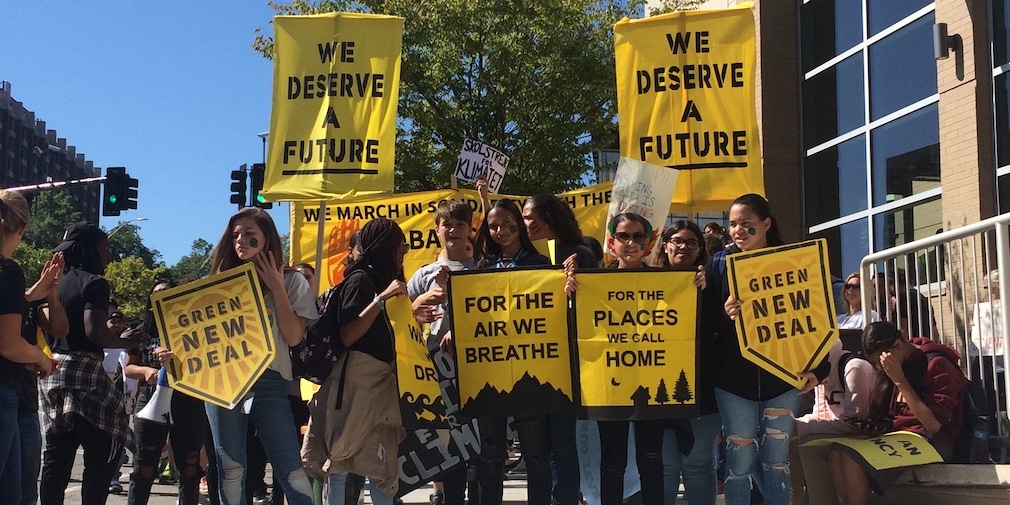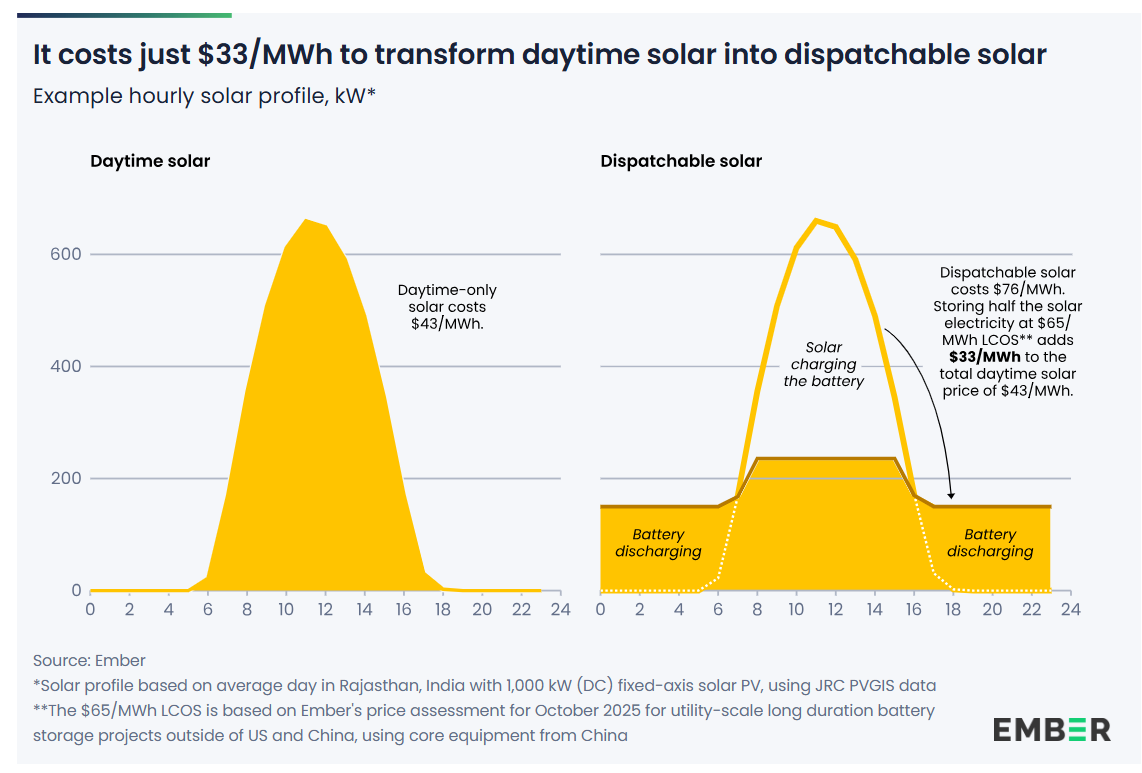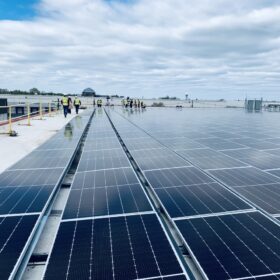Today the nation’s smallest state has its biggest climate protest yet. Hundreds of Rhode Island residents, including students from more than a dozen elementary, junior high and high schools met in a park and marched to an office of National Grid before holding a protest in front of the Rhode Island State House to call for greater action on the Climate Crisis.
As with any protest individual perspectives and the way they were expressed varied, but one unifying thread was the call for a Green New Deal, and in general steps to reduce greenhouse gas emissions.
“We are here organizing in Providence with people from all over the state to demand real action on climate change on the scale that climate and justice demand,” Ilan Upfal, an organizer with Sunrise Rhode Island, told pv magazine.
If our country mobilized quickly on the scale that we did after the Great Depression and Second World War, we could fully decarbonize in 10 years. Even if we don’t meet that goal, if that’s what we are fighting and organizing for and that’s what we are demanding, we can make serious cuts to emissions, and it will be day and night between that and what we are doing now.
The crowd was a mix of ages, with elderly protestors all the way down to elementary school children. This included teenagers from St. Mary Academy – Bay View, a Catholic School in Riverside, Rhode Island, whose students were given permission from the school to attend the strike and were accompanied by teachers.
“It’s something I’ve been passionate about for a long time,” 17-year old Emma Simias told pv magazine. “Climate justice is the ability for us to have a future to look forward to.”
Lagging action at the state level
Rhode Island is the state most dependent upon out-of-state natural gas – much of it extracted via fracking from the Marcellus Shale in Pennsylvania, West Virginia and Ohio. It is also the state that has seen the greatest temperature increase due to Climate Change, with temperatures rising more than two degrees Celsius.
However, the state’s actions to reduce emissions are slow. Rhode Island has an unambitious renewable energy mandate, and while Governor Gina Raimondo (D) has set a target to deploy 1 GW of renewables by the end of 2020, that includes projects under contract but not yet built. Specifically, it will include 400 MW from Ørsted’s Revolution Wind project, which is not expected to come online until 2023.
In 2018, Rhode Island got less than 4% of its electricity from in-state wind and solar – less than half the national average. And while generation from solar is growing rapidly, local installers have expressed concerns about both reductions to the rate paid under the state’s Renewable Energy Growth program, and the way that maximum system sizes are being calculated under net metering.
The state’s transportation sector is even more deeply mired in anachronism. The Rhode Island Public Transit Authority (RIPTA) has deployed only three electric buses under a pilot program, and plans to purchase a meager 16-20 more in 2021. Meanwhile, the Rhode Island Department of Transportation (RIDOT) is in the process of raiding funds from bike projects, while the state issues $200 million in bonds to rebuild a freeway in downtown Providence including adding lanes.
It is also unclear if the rather vague demands of protestors will be translated into actions to reduce emissions. But what is clear is that there is a rising movement in the state, with Sunrise Rhode Island estimating that is has around 100 members coming to meetings at three hubs.

Note: The author is a board member of the Rhode Island Bicycle Coalition
This content is protected by copyright and may not be reused. If you want to cooperate with us and would like to reuse some of our content, please contact: editors@pv-magazine.com.









I admire these young people for using their voices concerning the potential dangers from climate change. I’m 75 years old and probably won’t live to see the worst that might be and I have friends on both sides of the issues.
I challenge each of my friends to write letters to their grandchildren, if they have any, to be read in 30 years. In those letters explain very clearly your feelings about the “climate change” movement; do you feel that it is real or a hoax. Explain, resulting from your opinions in 2019, what did you personally do to help curb climate change. Believe me, what you write in those letters will be remembered by your grandchildren as your legacy to them.
Will you do it .. I will!!
I have done and will continue to do as I have done in the past. That is to install solar PV on every home I own, from now on. A letter is an explanation of one’s views. We’re past opinion and writing’s for the next generation. Open the wallet, install solar PV and energy storage on one’s home. Leave the “legacy” of energy responsibility to the next generation. “Challenges” are problems created by idiots, who don’t do their homework. With the technologies available to the average “Joe” for personal energy generation and use, there are no excuses left, DO not talk, something we have as a “legacy” from the “greatest generation”. Their motto, “Lead, follow, or get out of the way.”